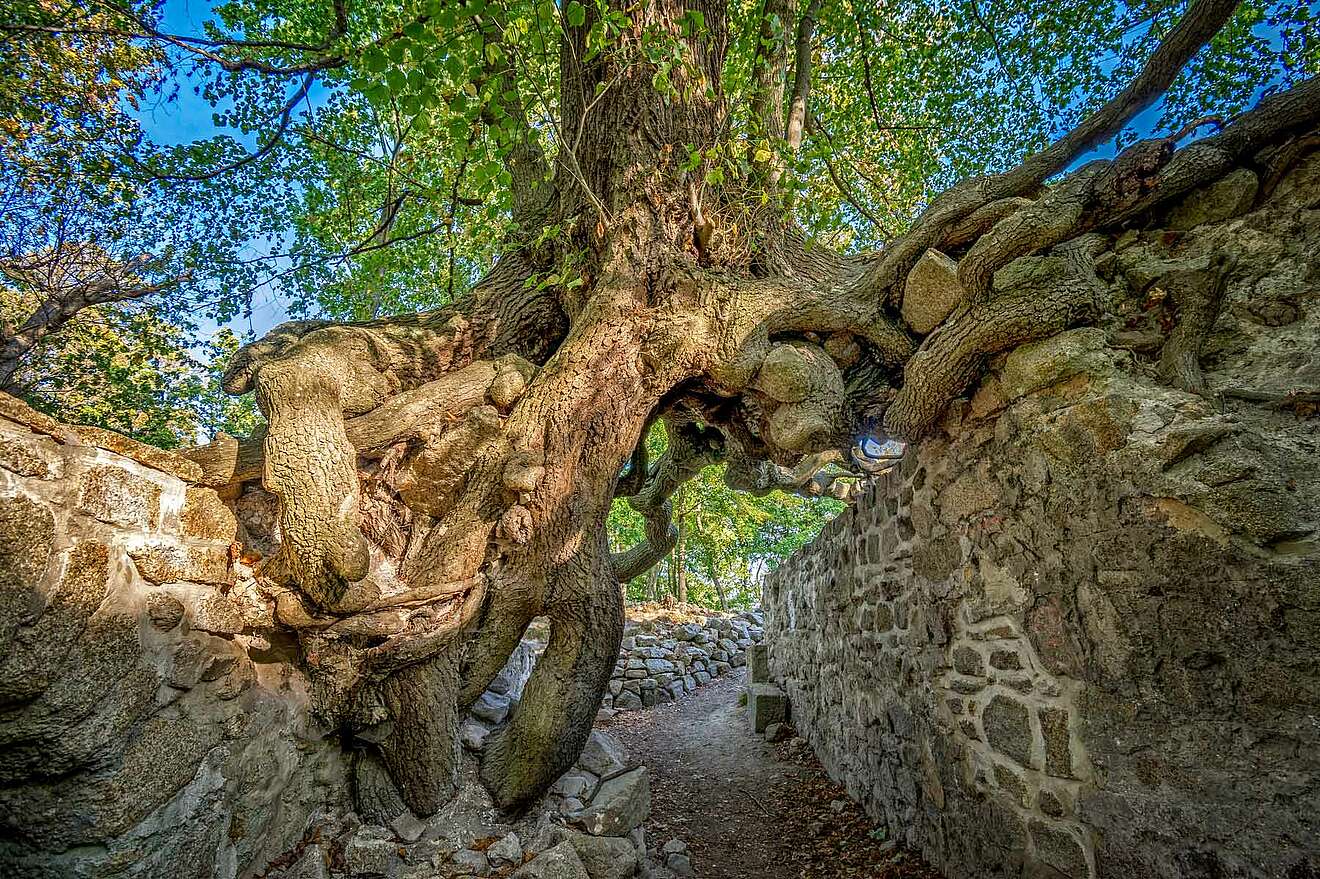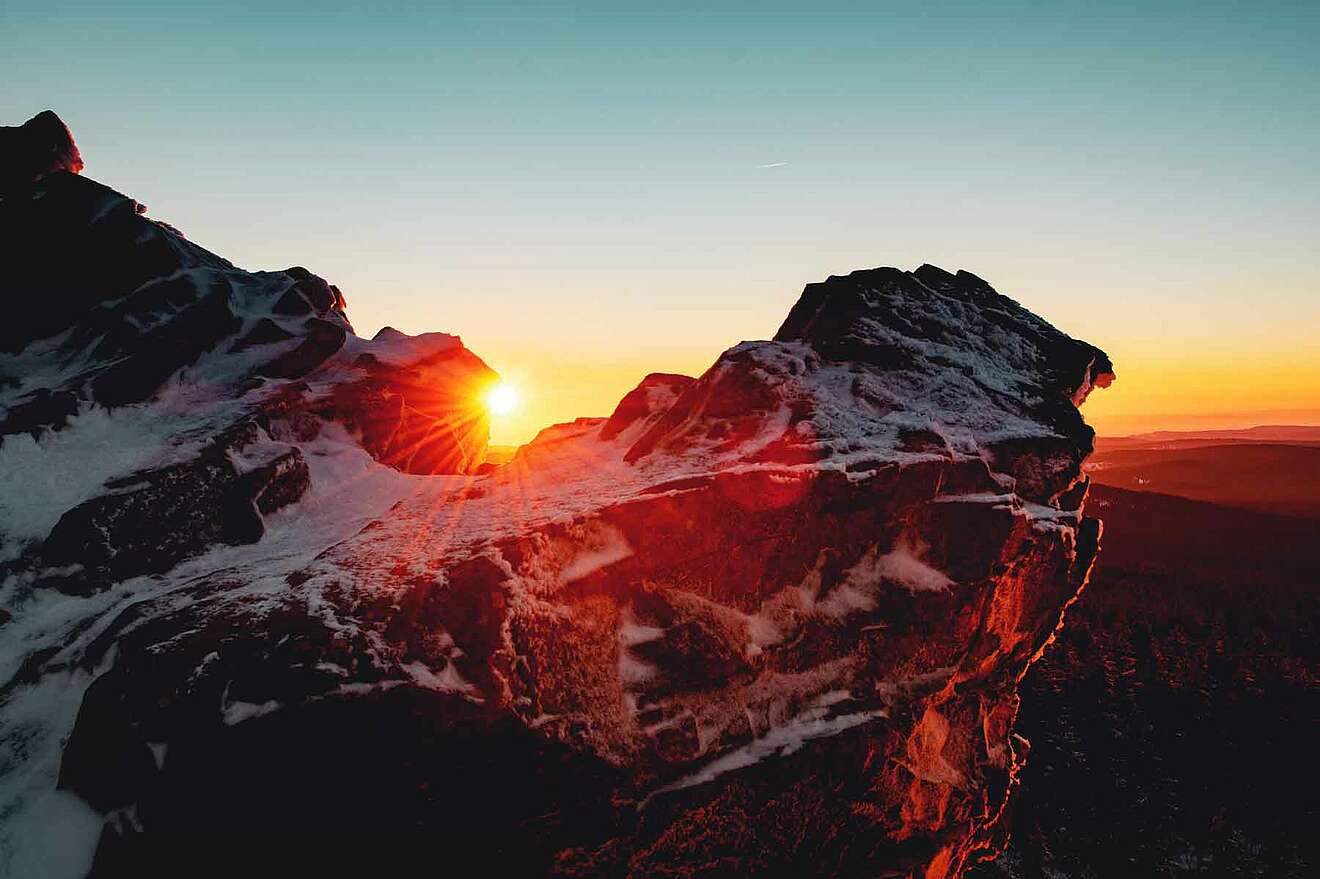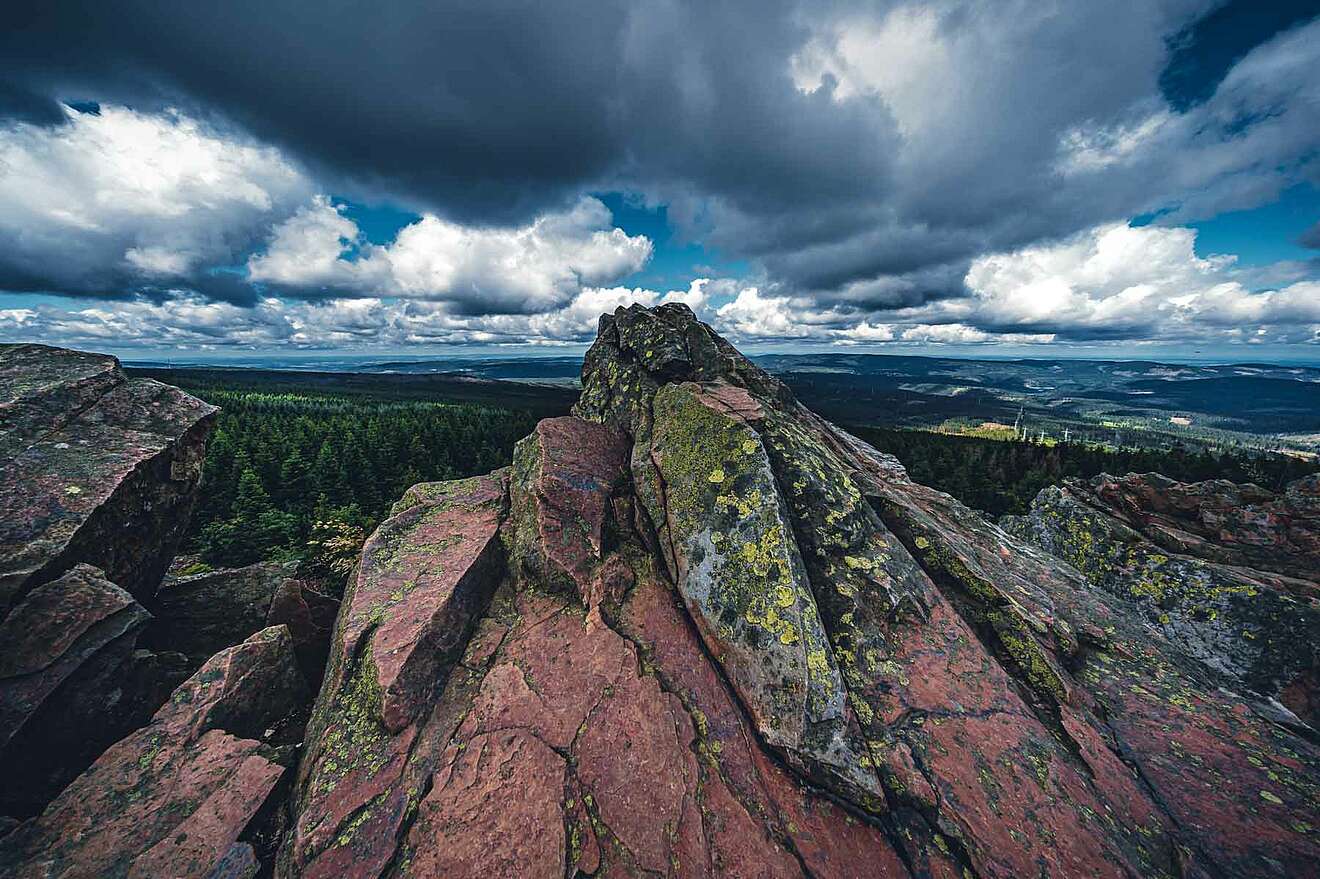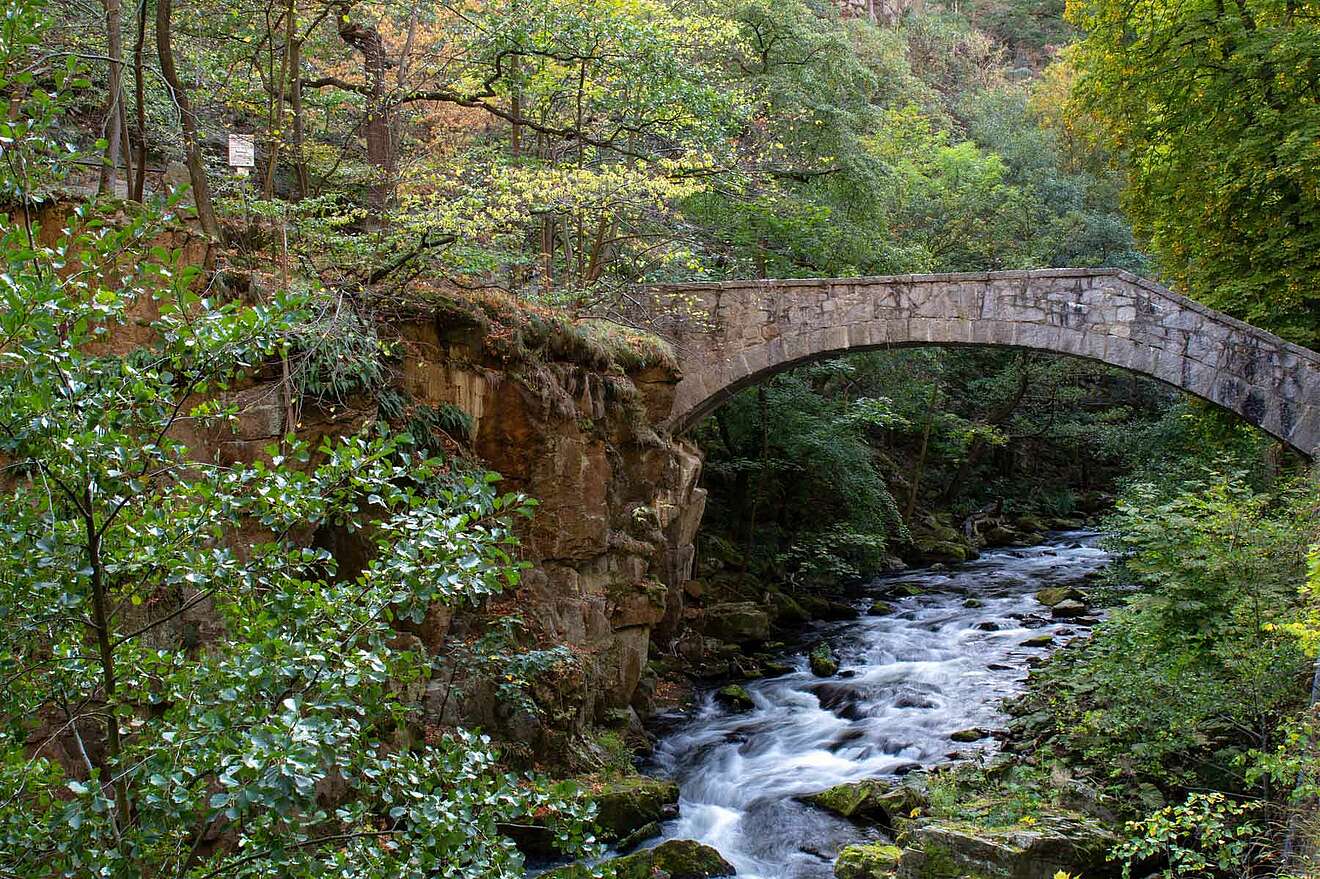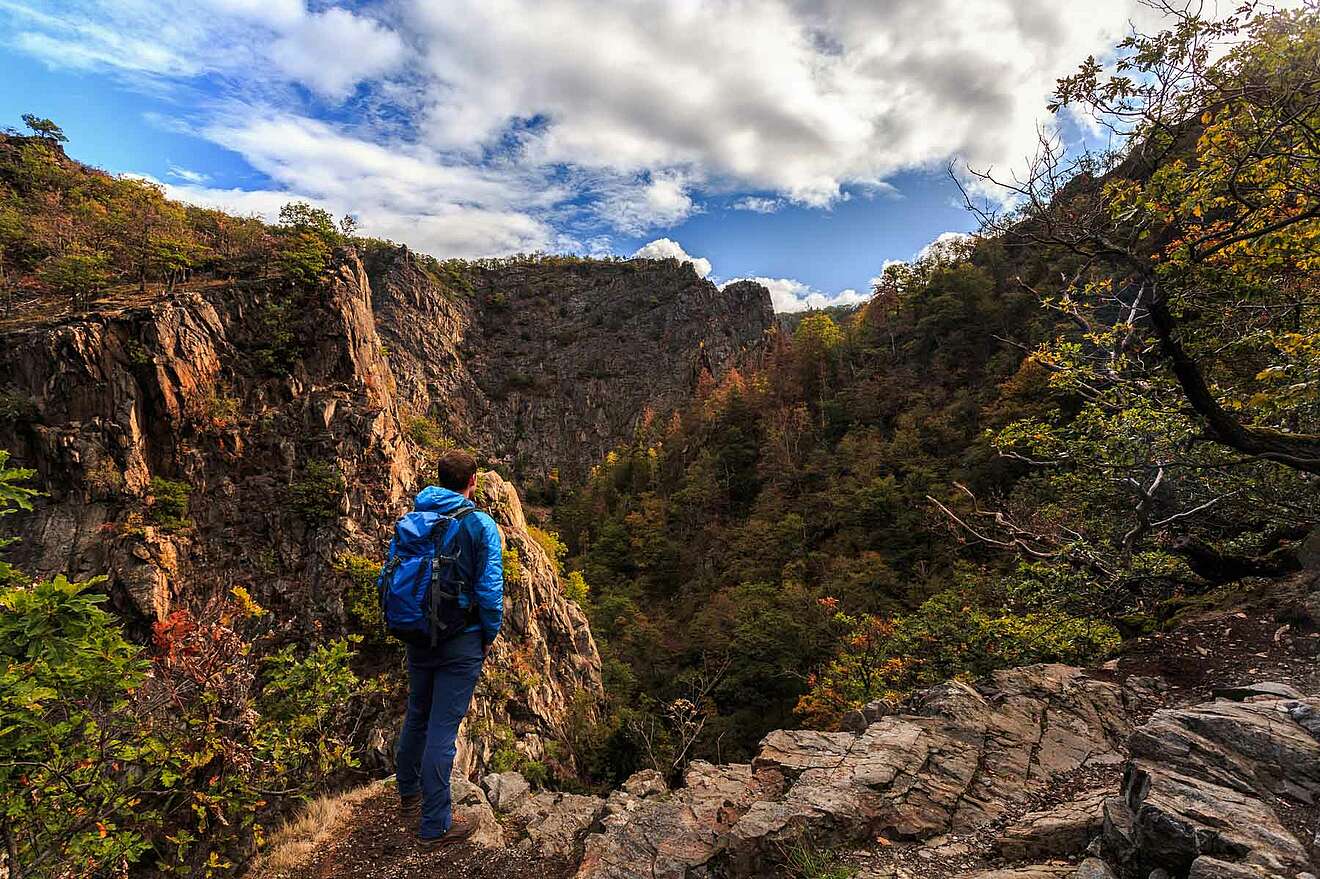

3 Natural Wonders in the Harz Mountains
Leon Grage - 27.03.2021
Hardly any other region in Germany impresses with such a diversity of natural experiences and breathtaking views as the Harz. According to a survey by the Oberharz Foundation, the Harz even received the largest number of votes (20 %) in a choice between a total of 19 forest areas and is therefore considered to be Germany's most beautiful forest natural wonders. It is therefore hardly surprising that hiking enthusiasts and nature-loving holidaymakers and tourists are drawn to the low mountain range year after year. In this article we present 3 natural wonders in the Harz to give you an impression of the natural phenomena of the Harz region. You should have seen these sights in the Harz Mountains:
1. the witch tree - the large lime tree near Stecklenberg.
The first Harz natural wonder, which is definitely worth a look, is the lime tree on the Lauenburg castle ruins. As the name suggests, the lime tree, often referred to as the "witch tree", grows on the ruins of Lauenburg Castle. More precisely, the lime tree forms a gate with its roots and protrudes over the walls of the ruin with its distinctive roots. The area with two castles, the large Lauenburg (the main castle) and the small Lauenburg (the outer castle), lies above Stecklenberg between Thale and Bad Suderode.
The origin of the Lauenburg as well as the tree is the second half of the 11th century. At that time, the complex was regarded as the imperial castle of Heinrich IV, which is why it was laid out in a correspondingly spacious manner. The total length of the castle was just under 350 m and was intended as an impressive hilltop castle as well as to protect the nearby Quedlinburg and a military road. In 1180, Lauenburg Castle was captured by the legendary Emperor Barbarossa (Frederick I). Many years later, robber barons allegedly resided in the castle, whereupon the castle facilities were finally destroyed in the 14th century.
Note: At the Lauenburg in the Harz Mountains, you can also find the stamping point 187 of the Harzer Wandernadel.
2. the wolf watch in the Harz mountains
The Wolfswarte is the forestless hilltop of the Bruchberg and impresses with its breathtaking view. The Wolfswarte can be climbed about 700 m northeast of the summit. A climb to the summit made of weathered Acker-Bruchberg quartzite is particularly worthwhile in good weather conditions, as the view then stretches especially far. From here you can even marvel at the brocken in its full extent.
If you want to go on a hike to the Wolfswarte you can choose the so-called Wolfswarter Weg from Altenau directly to it. In some places, it is connected to the Steile-Wand road leading to Torfhaus. Alternatively, the summit can be climbed directly from Torfhaus over a length of just under 4 km. If you want to find out more about the Wolfswarte, you should definitely visit here.
Note: Of course, we also have the matching hiking trail ready. Here you will find the description of the moderately difficult hike "Altenau - Wolfswarte".
The hiking route starts at the car park in Tischlertal and then leads for about 11.3 km, first past the Förster Ludwig hiking hut to the Wolfswarte and then via the Gustav-Baumann-Weg back to the starting point. The hike takes about three and a half hours and requires a good basic level of fitness. You can also follow us on Komoot to discover more Harz hiking trails.
3. the bode valley - a breathtaking gorge with panoramic views
The Bode Valley is one of the most beautiful gorges in Germany and lies on the north-eastern edge of the Harz Mountains above Thale. However, caution is advised, because a not entirely harmless hiking adventure awaits tourists. Here in the Bode Valley, the Harz, steeped in legend and myth, shows its wildest side and offers hikers a very special experience thanks to its fabulous landscape and the many attractions and offers. It is named after the Bode River, which has carved its way into the rock over millions of years. If you want to see this natural phenomenon up close, you can climb up from the Hexentanzplatz or the Rosstrappe. We have also put together two possible hiking trails in the Bode Valley:
- Hiking trail Prinzensicht - Bodetalblick round from Thale Hbf.
- Hiking trail Bodetal - Bodekessel round from Thale Hbf
If you don't necessarily want to hike, you can comfortably use the Bodetal cable car for the ascent. The so-called Bodetalblick (often also called "Kaiserblick") is particularly worthwhile. The vantage point is located above the Bode Valley on the southern side of the Bode River. From here you can enjoy a wide view over the Bode Valley and its impressive rock formations. The vantage point, which is secured towards the valley, attracts hikers not only because of its view - the stamp point 70 of the Harzer Wandernadel, which is however named differently due to its proximity to the western Prinzensicht, is also located here on site.
Note: A visit to the Bode Valley is particularly recommended in spring and summer, as there is a risk of falling rocks during the cold season.
